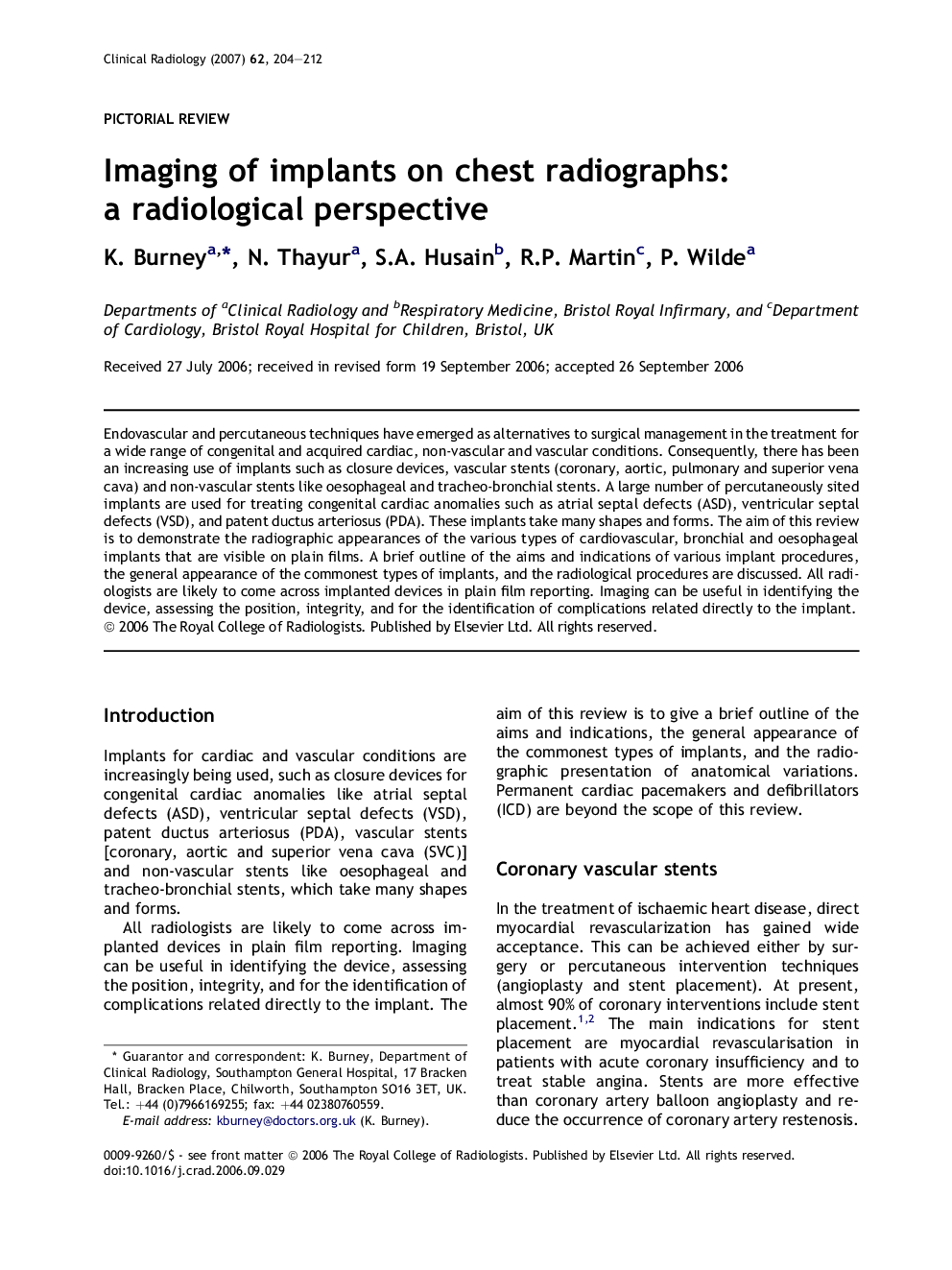| Article ID | Journal | Published Year | Pages | File Type |
|---|---|---|---|---|
| 3983524 | Clinical Radiology | 2007 | 9 Pages |
Endovascular and percutaneous techniques have emerged as alternatives to surgical management in the treatment for a wide range of congenital and acquired cardiac, non-vascular and vascular conditions. Consequently, there has been an increasing use of implants such as closure devices, vascular stents (coronary, aortic, pulmonary and superior vena cava) and non-vascular stents like oesophageal and tracheo-bronchial stents. A large number of percutaneously sited implants are used for treating congenital cardiac anomalies such as atrial septal defects (ASD), ventricular septal defects (VSD), and patent ductus arteriosus (PDA). These implants take many shapes and forms. The aim of this review is to demonstrate the radiographic appearances of the various types of cardiovascular, bronchial and oesophageal implants that are visible on plain films. A brief outline of the aims and indications of various implant procedures, the general appearance of the commonest types of implants, and the radiological procedures are discussed. All radiologists are likely to come across implanted devices in plain film reporting. Imaging can be useful in identifying the device, assessing the position, integrity, and for the identification of complications related directly to the implant.
